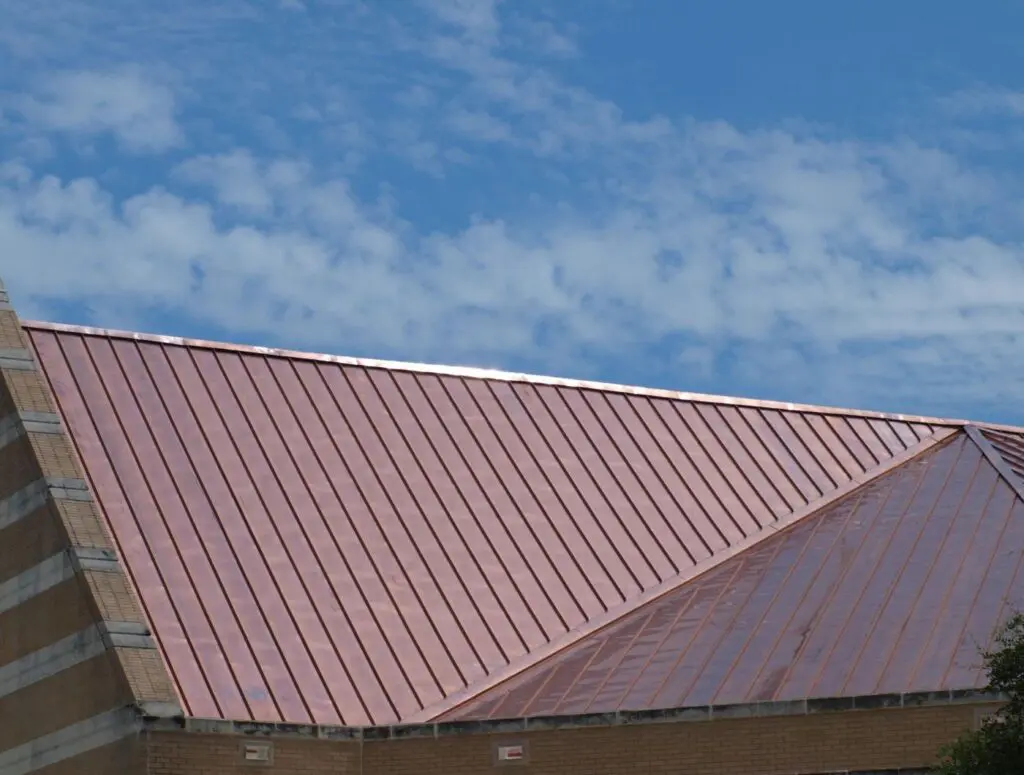
Roof Replacement Warranties: Understanding Coverage and Assessing Your Roof
Roofs are vital components of our homes and businesses. They shield us from the elements and contribute significantly to the overall structural integrity of our buildings. Given the pivotal role they play, it’s essential to understand the warranties that come with them, especially when considering a roof replacement. This blog aims to shed light on roof replacement warranties and help you determine if your roof is covered.
COMPARE QUOTESThe Importance of Roof Warranties
Before delving into specifics, it’s important to underscore why roof warranties matter. A roof is a significant investment, and if something goes wrong, repairs or replacements can be costly. A warranty acts as a safety net, ensuring that you’re not left with a gaping hole in your roof and your finances.
Types of Roof Warranties
When discussing roof replacement warranties, it’s essential to understand the two primary types:
- Manufacturer’s Warranty: This warranty is provided by the manufacturer of the roofing materials. It generally covers defects in the roofing material itself, such as crumbling, splitting, or other failures that might occur under normal conditions. Depending on the material and the manufacturer, these warranties can last anywhere from 20 to 50 years.
- Workmanship Warranty: Offered by the roofing contractor, this warranty covers errors in installation. It’s a guarantee that the roof was installed correctly and without any mistakes that might cause it to fail prematurely. These typically last for a shorter period, ranging from 1 to 10 years, but it varies by contractor.

How to Tell If Your Roof is Covered
To determine if your roof is covered under a warranty:
- Check Your Paperwork: The first and most obvious step is to review any documents you received when your roof was installed. This should include warranty details. If you can’t find these documents, try contacting the roofing company or the manufacturer.
- Inspect the Roof: Sometimes, the signs that your roof is failing due to a manufacturing or workmanship defect are visible. Look for missing shingles, warping, cracking, or any signs of unusual wear and tear.
- Professional Assessment: If you’re unsure about assessing the roof’s condition yourself, consider hiring a professional roofing contractor. They can not only tell you about the state of your roof but also determine if any issues might be covered under warranty.
- Contact the Manufacturer or Contractor: If you suspect a defect covered by warranty, get in touch with the relevant party – either the manufacturer or the roofing contractor. They can guide you through the process of lodging a claim.
Things to Keep in Mind
- Understand the Specifics: Warranties may have specific conditions. For instance, some might require regular maintenance checks, or they could become void in cases of natural disasters.
- Transferability: If you’ve bought a building or house with a pre-installed roof, check if the warranty is transferable. Some warranties can be passed on to new owners, while others can’t.
- Deductibles and Prorated Coverage: Some warranties might have a deductible or might be prorated, meaning the coverage decreases over time. Familiarize yourself with these terms to avoid surprises.
Roof replacement warranties provide peace of mind, ensuring that your investment is protected. By understanding the nuances of your warranty and knowing how to assess your roof’s condition, you can confidently navigate any roofing issues that may arise. Remember, a well-maintained roof not only protects your property but also adds to its value. Ensure you’re covered, and enjoy the security that comes with it.

Navigating Roof Repairs and Replacements: Deciphering the Needs and Warranty Implications
One of the persistent dilemmas homeowners face is deciphering whether their roof requires a simple repair or a complete replacement. It’s crucial to make the right decision because it can influence the longevity of the roof, the overall protection of your home, and of course, your expenses. Moreover, the type of work – repair or replacement – can have varying implications for your roofing warranty. Let’s delve into how you can navigate these decisions.
Identifying the Need: Repair or Replacement?
- Age of Your Roof: The lifespan of your roof plays a pivotal role in determining its needs. An asphalt shingle roof, for instance, typically lasts about 20 to 25 years. If your roof is nearing this age or has surpassed it, a replacement might be more cost-effective in the long run.
- Extent of Damage: Minor issues, such as a few missing shingles or a small leak, might only require repairs. However, if there’s widespread damage or if the same problems keep recurring, it’s a sign you might need a replacement.
- Water Damage: If you observe water stains on your ceilings or walls, it indicates a more severe problem. While sometimes a repair might suffice, persistent water damage often calls for a thorough examination and possibly a replacement.
- Roof Valley Issues: Roof valleys play an essential role in channelling rainwater. If shingles in this area are falling apart or missing, it’s a significant sign of potential roof failure, suggesting a replacement might be imminent.
Warranty Implications
- Repairs: When it comes to minor repairs, most warranties, especially manufacturer’s warranties, will still hold as long as the damage wasn’t caused by improper installation or external factors outside the material’s control. However, always ensure that the person or company doing the repair is certified to work with the roofing material. Some warranties can become void if repairs aren’t done by approved professionals.
- Replacements: If you’re considering a roof replacement due to material failure before the end of the warranty period, you could be eligible for either a full replacement or a prorated amount, depending on the warranty’s terms. If the roof’s issues arise from workmanship errors and you’re within the warranty period, the roofing contractor should handle the replacement costs. Always consult with the original installer or manufacturer before making decisions.
Preemptive Measures
- Regular Inspections: It’s advisable to have a professional inspect your roof every couple of years. They can spot potential issues that might be unnoticeable to an untrained eye, allowing for repairs before they escalate.
- Understand Your Warranty: Familiarize yourself with the specifics of your roofing warranty. Know what is covered and what isn’t, and ensure you adhere to any maintenance clauses to keep the warranty valid.
- Choose Quality: Whether it’s a repair or a replacement, always opt for high-quality materials and certified professionals. It ensures longevity and often comes with more comprehensive warranty coverage.
The decision between roof repair and replacement isn’t always straightforward. It requires a judicious assessment of the roof’s condition, balanced with financial considerations and warranty implications. Being proactive, prioritizing regular inspections, and being well-versed with your warranty can save you considerable time, stress, and money in the long run. Your roof is an investment – protect it wisely.

Calculating the Cost: Roof Replacement Estimates in 2023
When you’re contemplating a roof replacement, it’s essential to consider the expenses involved. Several factors play a role in determining the cost, from the type of material chosen to the roof’s size and pitch. While a warranty might influence the overall price, it’s a critical component to ensure you’re covered against unforeseen issues in the future.
COMPARE QUOTESFactors Affecting Roof Replacement Costs:
- Size of the Roof: The most significant determinant in the cost of a roof replacement is the size. Contractors often talk in terms of “roofing squares.” One roofing square equates to 100 square feet. Thus, a larger roof requires more material, which increases the cost.
- Materials Used: Asphalt shingles, for example, are generally less expensive than metal roofing or slate tiles. The quality and brand of the materials also influence the cost. Premium quality materials may have a higher upfront cost but offer longevity and better protection.
- Labor and Installation: The complexity of the roof, such as its pitch and any unique features, can impact labor costs. A steep roof or one with multiple chimneys, skylights, or other elements can be more challenging and time-consuming to replace.
- Location: As mentioned previously, the geographical location of your property can significantly impact costs. Certain areas have higher labor rates, and specific climates may necessitate particular materials.
Warranty Implications on Cost:
- Without Warranty: Opting for a roof replacement without a warranty might decrease your initial expenses. The average cost for a roof replacement without a warranty typically ranges between $5,000 to $25,000, depending largely on the factors listed above. However, it’s worth noting that without warranty coverage, any subsequent issues with materials or installation will be out-of-pocket expenses.
- With Warranty: When choosing a roof replacement that includes a warranty, you might find the initial costs are slightly higher due to the added protection offered. The average price with a standard manufacturer’s warranty might range between $5,500 to $28,000. Again, the exact amount will depend on the roof’s size, materials, and other factors. Comprehensive warranties from reputable brands or extended warranties might push the cost slightly higher but offer peace of mind for many years.
The Value of Investment:
While the costs can be considerable, it’s essential to see roof replacement as an investment. A new, high-quality roof can increase property value, enhance curb appeal, and offer energy-saving benefits. Moreover, with a valid warranty, you are safeguarded against potential faults or defects in materials or workmanship.
The decision to replace your roof comes with various considerations, with cost being a primary factor. It’s crucial to gather multiple quotes, understand what each quote entails, and weigh the long-term benefits of your investment. Whether you choose to go with or without a warranty, always ensure you’re getting the best value for your money and protecting your home in the best way possible.

Picking the Best Type of Replacement Roof for Your Home or Office
When you’re faced with the need to replace your roof, the myriad of choices available can feel overwhelming. Different roofing materials offer various advantages in terms of lifespan, appearance, energy efficiency, and cost. To make an informed decision, it’s essential to understand the characteristics of each type and how they align with your priorities and the specific needs of your property.
COMPARE QUOTES1. Asphalt Shingles:
- Description: These are the most commonly used roofing material in many parts of the world, particularly in North America.
- Advantages: Asphalt shingles are versatile, suitable for various architectural styles, and come in a range of colors. They’re also relatively easy to install and provide good fire resistance.
- Considerations: Their lifespan, which averages 20 to 30 years, is shorter than some other roofing materials. Regular maintenance is essential to prevent moss and algae growth.
2. Metal Roofing:
- Description: Metal roofs can be made from various metals, including aluminum, copper, steel, and zinc alloy. They can be installed as panels or shingles.
- Advantages: Metal roofs are durable, fire-resistant, and can last up to 60-70 years or more. They also reflect sunlight, which can reduce cooling costs in the summer.
- Considerations: They can be more expensive initially but can pay off in longevity and energy savings. Some people also have reservations about the noise during rain or hail.
3. Tile Roofing:
- Description: Typically made of clay or concrete, tile roofs are a staple in Mediterranean, Spanish, and Southwestern architecture.
- Advantages: Extremely long-lasting, with some tile roofs enduring for over a century. They’re also fire-resistant and can offer a unique aesthetic appeal.
- Considerations: These are heavier than other materials, so ensure your home’s structure can bear the weight. They can also be on the pricier side.
4. Slate Roofs:
- Description: Made from natural stone, slate roofs have a distinctive, elegant appearance.
- Advantages: Incredibly durable, slate roofs can last for over a century. They’re also fire-resistant and environmentally friendly since they’re made from natural materials.
- Considerations: Like tile, slate is heavy, so structural considerations are essential. It’s also one of the most expensive roofing materials.
5. Wooden Shingles or Shakes:
- Description: Traditionally made from cedar, redwood, or pine, these offer a natural and rustic look.
- Advantages: They can provide natural insulation up to two times that of asphalt shingles.
- Considerations: They have a shorter lifespan, usually around 20 to 30 years, and require regular maintenance. There’s also a higher fire risk, though treatments are available to enhance fire resistance.

Factors to Consider When Choosing a Roof Type:
- Climate and Weather Patterns: Some materials fare better in specific climates. For instance, metal roofs are excellent for areas prone to wildfires, while slate and tiles are good for regions with heavy storms and rain.
- Aesthetic Appeal: The appearance of the roof can greatly influence the overall look of the house. Choose a style and color that complements the architecture and design of your property.
- Maintenance Needs: Some roofs, like metal or slate, require minimal maintenance, while others, like wood, may require more frequent attention.
- Budget: While it’s tempting to go for the cheapest option, remember that a roof is a long-term investment. It might be worth paying a bit more upfront for a roof that lasts longer or offers better insulation.
- Environmental Concerns: If sustainability is a concern, consider materials that are eco-friendly, either through their production process or their energy-saving capabilities.
Your choice of roofing material can significantly impact the appearance, durability, and comfort of your home or office. While the options may seem daunting at first, a clear understanding of each material’s pros and cons can guide you to a decision that best suits your needs and budget. It’s also always a good idea to consult with a roofing professional who can provide expert insights tailored to your situation.
COMPARE QUOTESThe Longevity and Warranty of Different Roof Types
Roofing decisions are not just about aesthetics and initial costs. Longevity and warranty terms should play a critical role in your decision-making process. After all, a roof is an investment that protects your entire home or office, and you want to ensure it lasts and is covered against unforeseen issues.

Understanding Roof Lifespans
Different roofing materials have varying average lifespans, which can influence your decision:
- Asphalt Shingles: Typically, these last between 20 to 30 years. However, high-quality, architectural shingles can last a bit longer.
- Metal Roofing: With proper maintenance, a metal roof can serve you well for 40 to 70 years, depending on the specific material.
- Tile and Slate Roofs: These can last a lifetime. Slate roofs, in particular, can endure for over a century, while tile roofs often last between 50 to 100 years.
- Wooden Shingles or Shakes: Their life expectancy is usually around 20 to 30 years, but with diligent care and in favorable climates, they can last longer.
Deciphering Roofing Warranties
Roof warranties can be a bit complex, but they are divided into two main categories:
- Material or Manufacturer’s Warranty: This covers defects in the roofing material itself. If your shingles start to deteriorate prematurely, for instance, the manufacturer may compensate you if it’s proven to be a defect in the product.
- Workmanship or Installation Warranty: Offered by the roofing contractor, this warranty covers errors in installation. If your roof starts leaking because it wasn’t installed correctly, the installer would be responsible for repairs under this warranty.
It’s important to read the fine print and understand the terms of both warranties. Some may be prorated, meaning the coverage diminishes over time. Others might require regular maintenance as a condition for the warranty to remain valid.

Evaluating Warranty Terms Based on Roof Type
When choosing a roof type, consider both its natural lifespan and the warranty terms:
- Asphalt Shingles: Most manufacturers offer warranties ranging from 15 to 30 years. However, premium shingles might come with a warranty that extends up to 50 years.
- Metal Roofing: Many metal roofing warranties last around 30 to 50 years, aligning with their longer lifespan.
- Tile and Slate: Given their extended lifespan, these materials often come with lengthy warranties, sometimes even reaching 50 years or more.
- Wood Shingles: Warranties for wood roofs tend to be shorter, typically around 20 to 30 years, reflecting their more organic nature and susceptibility to elements.
A roof is more than just a shelter; it’s a significant investment in the safety and value of your property. By understanding the lifespan of various roofing materials and the warranties that back them, you can make a more informed decision and enjoy peace of mind knowing your choice is supported for years to come. Always ensure you’re dealing with reputable manufacturers and contractors, and don’t hesitate to ask questions to clarify any warranty terms. Your roof is a long-term commitment, and it’s essential to get it right.
COMPARE QUOTES


Leave a Reply